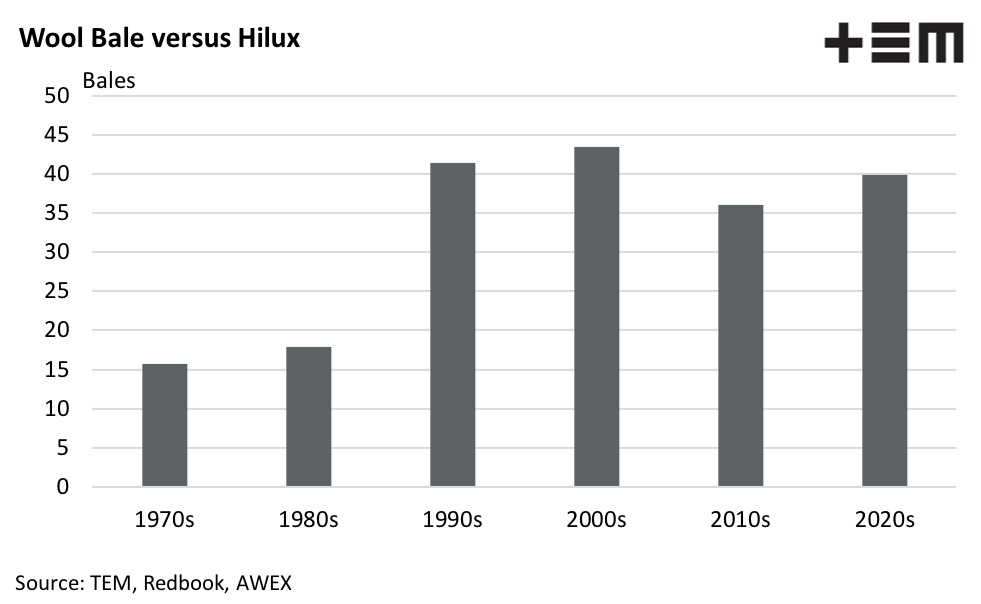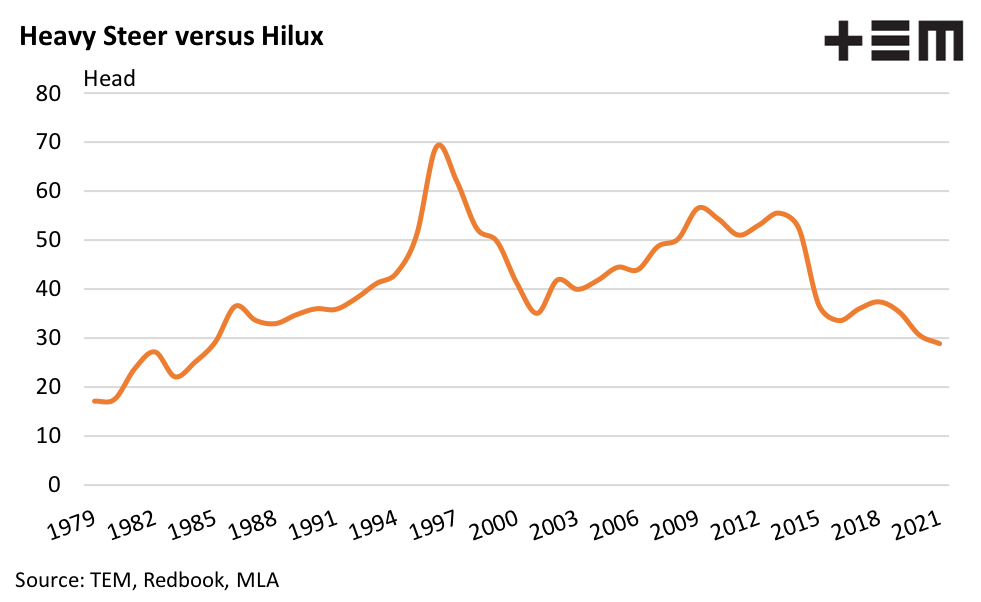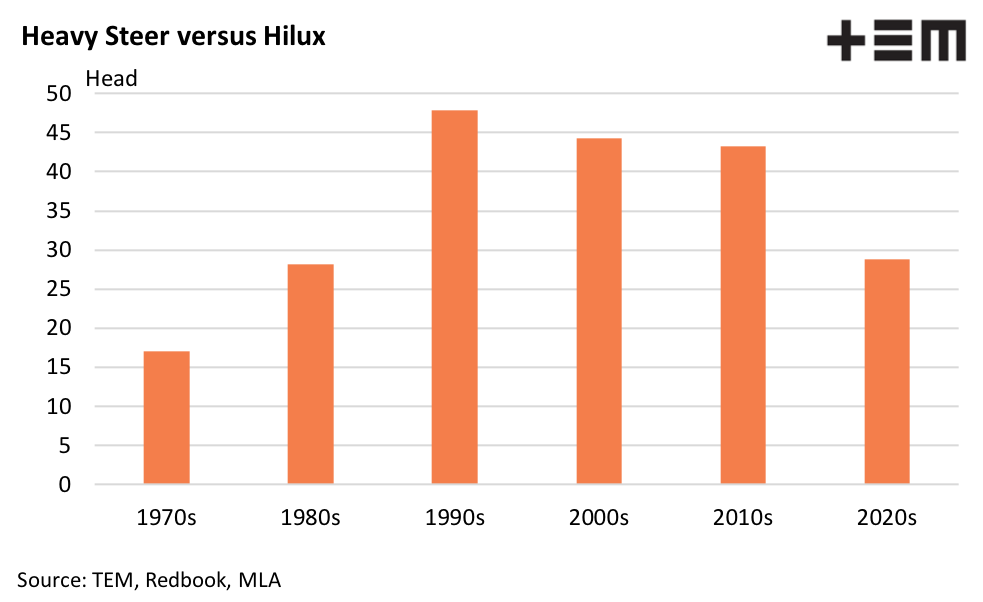Oh what a feeling

The Snapshot
- Since 1979 the number of trade lambs required to buy a Hilux has ranged from 350 head to 1,200 head.
- In recent years the trade lamb has been able to claw back some ground to the Hilux to see the ratio move back to where it began in the late 1970s, with less than 400 head of trade lambs required to be sold to buy a Hilux.
- The strong rally in wool prices during the 2018/19 seasons saw the bale to Hilux ratio dip below 30. However, by 2021 wool had returned to the 40 odd bales required to buy a Hilux that had been the decade benchmark since the 1990s.
- Since the late 1970s the number of heavy steers required to be sold to buy a Hilux has ranged from 17 to 69, with the Hilux at it’s most expensive, in heavy steer terms, during 1996. Currently, it takes the sale of around 30 head of steer to buy a Hilux.
The Detail
As the Episode3 first year anniversary rolls over we wanted to branch out and take a look at a few obscure and amusing analysis pieces. One comparison that had been on our minds was the volume of sales of a selection of livestock products it would take to be able to afford to buy a new Toyota Hilux.
In order to keep the comparison robust we selected the average recommended retail price of the Hilux type each year that would be most appealing to a farmer, such as the four wheel drive Diesel ute variety, and calculated how many heavy steers, trade lambs or bales of wool (based on the AWEX average bale value) would need to be sold to buy this vehicle.
Since 1979 the number of trade lambs required to buy a Hilux has ranged from 350 head to 1,200 head. The growing popularity of the Hilux during the 1980s saw some strong annual price gains and the lead up to the crash of the wool reserve price scheme in the early 1990s had lamb prices under pressure. The result was that the ratio of lambs sold to afford a Hilux blew out to nearly 1,200 head in 1994. Indeed, over the 1990s the average number of lambs needed to buy a Hilux sat at 960 head.
Throughout the last two decades the growth of the prime lamb sector and increased demand for sheep meat across a variety of export destinations, combined with reduced a reduced sheep flock, have seen lamb prices well supported. Meanwhile the growth in Hilux pricing began to moderate, such that the trade lamb was able to claw back some ground to the Hilux to see the ratio move back to where it began, with less than 400 head of trade lambs required to be sold in 2021 to buy a Hilux.
The trajectory for wool bales to Hilux ratio through the 1980s and 1990s was similar to that of trade lamb with an increasing number of wool bales required to afford a Hilux, moving from around 15 bales to 40 bales over these two decades.
Wool managed a minor recovery during 2003 to drop to only 28 bales required to buy a Hilux, but across the entire 2000s decade averaged levels similar to the 40 bales required over the 1990s. The strong rally in wool prices during the 2018/19 seasons saw another minor recovery to below 30 bales, albeit briefly. However, by 2021 wool had returned to the 40 odd bales required to buy a Hilux that had been the decade benchmark since the 1990s.
Since the late 1970s the number of heavy steers required to be sold to buy a Hilux has ranged from 17 to 69, with the Hilux at it’s most expensive, in heavy steer terms, during 1996. As was the case with the trade lamb, the situation of strong offshore demand for meat protein and tight domestic supply has favoured the heavy steer ahead of the Hilux in recent decades so the ratio has begun to swing towards the steer’s favour.
Currently, it takes the sale of around 30 head of steer to buy a Hilux, which is the lowest it has been on a decade average basis since the 1980s.






